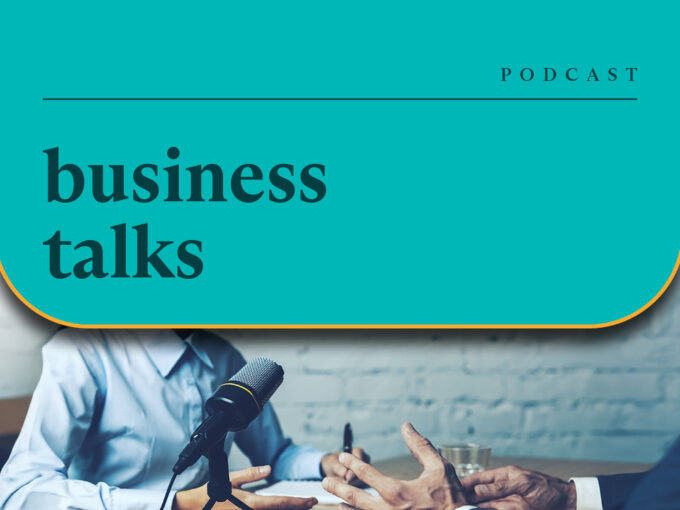Employee Ownership Trusts (EOTs) allow business owners to transfer a controlling interest in their business to employee ownership without paying capital gains tax (CGT). Significant changes to EOTs were announced in the Autumn Budget 2024 and took effect on 30 October 2024. The updated rules are outlined below.
What is an Employee Ownership Trust?
An Employee Ownership Trust is a specific type of Employee Benefit Trust (EBT) used to reward employees and encourage employee engagement. An EOT provides an indirect form of employee ownership whereby the trust holds a controlling stake in a company on behalf of all the company’s employees.
Where a shareholder sells a controlling stake in their business to an EOT and qualifying conditions are met there can be significant tax advantages, with a 0% CGT rate potentially applying. This can make EOTs useful in succession planning as an alternative to an external sale, a private equity backed buy-out or a management buy-out (MBO).
How does an Employee Ownership Trust work?
Put simply:
- A qualifying EOT is set up.
- The business owners sell more than 50% of the current share capital to the EOT for market value (using an independent valuation). Part of the purchase price might be left outstanding as a debt owed by the EOT to the selling shareholders (or the EOT can make an initial payment to the shareholders using third party debt finance).
- The company uses future profits to make contributions to the EOT and the EOT uses these payments to repay the outstanding purchase price owed to the selling shareholders (plus associated costs). There’s a specific tax relief for these contributions if they come within the definition of ‘acquisition costs’ to ensure they are not taxed in the EOT. Following amendments made during the 2024-25 Finance Bill’s progress through Parliament, ‘acquisition costs’ now include repayments of amounts borrowed to fund the acquisition, company valuation costs, and any other reasonable expenses directly connected with the acquisition (excluding any expenses incurred in connection with the ownership of the shares once acquired), in addition to the previously included interest and stamp duty.
Qualifying conditions
Determining the price which the EOT must pay for the shares is important– setting this too high risks the trustees being found to be in breach of their duty of care towards the employees as beneficiaries of the trust and might result in failure to meet the key conditions for the CGT exemption to apply (see below).
These are the key conditions which must be met for the selling shareholders to benefit from the CGT exemption:
- The trustees of the EOT must be UK tax resident.
- The company must be a trading company or the principal company of a trading group.
- All employees must be entitled to be beneficiaries of the EOT, subject to a qualifying period of up to one year and any benefit to employees must be on the same terms for all eligible employees. So the trust cannot prioritise benefits to the advantage of particular employees, but it can allocate benefits of differing amounts according to factors such as salary and length of service.
- The EOT must not hold a controlling interest in the company (ie more than 50% of ordinary share capital and voting rights, profits available for distribution and 50% of the assets on winding up) before the tax year of the transfer and must hold a controlling interest at the end of the tax year in which the transfer takes place.
- The trustees of the EOT must take reasonable steps to ensure the consideration paid by the EOT for the shares isn’t more than the market value.
- The number of continuing shareholders (and any other 5% participators) who are directors, employees or persons connected with them must not be more than 40% of the total number of employees of the company or group.
- Exiting shareholders (or persons connected with them) must not retain control of the company post-sale by controlling the EOT.
If the EOT conditions are breached within four years of the end of the tax year in which the disposal was made, relief will be withdrawn and the exiting shareholders will be assessed to CGT as if the claim hadn’t been made.
What are the advantages of selling to an Employee Ownership Trust?
Shares can be sold to the EOT at their full market value without having to pay any CGT either at the time of the sale or potentially also when deferred consideration is paid. This compares to paying CGT at 10% on the first £1 million of lifetime capital gains that qualify for Business Asset Disposal Relief (BADR) or 24% on further gains that do not qualify for BADR. Note that the BADR CGT rate is due to increase to 14% from 6 April 2025 and to 18% from 6 April 2026.
The sale should also be free of income tax and inheritance tax, subject to certain conditions being met. It is recommended that advance HMRC tax clearance is sought to obtain certainty about the tax treatment of the sale.
The EOT only needs to buy a controlling interest, so not all shareholders have to sell their shares to the EOT. While shareholders could, in theory, dispose of only enough of their shareholding for the EOT to obtain control, this might be unlikely to occur in practice as the CGT exemption will not apply to any later disposal.
The directors who have sold their shareholding can stay in post after the sale and can continue to receive a salary for their director’s duties (but can no longer control the company).
By selling internally, the shareholders don’t need to find an external investor and time and fees can often be saved on the transaction (albeit the business must be suited to employee ownership).
What are the advantages of an EOT for employees?
Employees can get an interest in the company without having to use their own funds.
The employees might feel more engaged as they have a stake in the business they’re working for.
Employees can be paid tax-free bonuses of up to £3,600 a year so long as these are paid to all qualifying employees on the same terms (although directors can be excluded which might provide flexibility if payments might better incentivise non-directors). This bonus is still subject to NIC though. This is a cash bonus, not a dividend, and so it can be paid without the company having to make a profit or have distributable reserves.
The only factors which may be used to determine the award are:
- The employee’s remuneration
- The employee’s length of service
- Hours worked by the employee
So allowing full-time employees to receive more than part-time employees, for example, without losing the tax-free nature of the payment.
How we can help
Using an Employee Ownership Trust is one of several ways a business owner can exit their business. This route is becoming more popular, not least because of the tax advantages available given the reduction in the lifetime allowance for Business Asset Disposal Relief. Whether it’s the right option for you will depend on several factors, including whether your business is suited to employee ownership. For more on the options available to you for exiting your business, see Business succession planning
We can help you decide whether using an Employee Ownership Trust is the right option for you and can advise on all aspects of implementing such a sale. Get in touch for more information.
This factsheet is based on law and HMRC practice at 26 February 2025 and includes changes to be included in Finance Act 2025 but which are not yet law.
Contact Us
Partner, Bristol
Key experience










